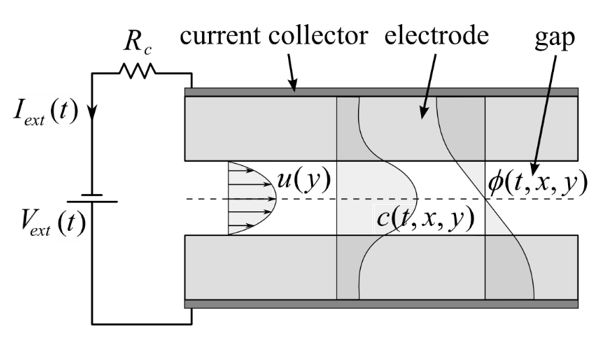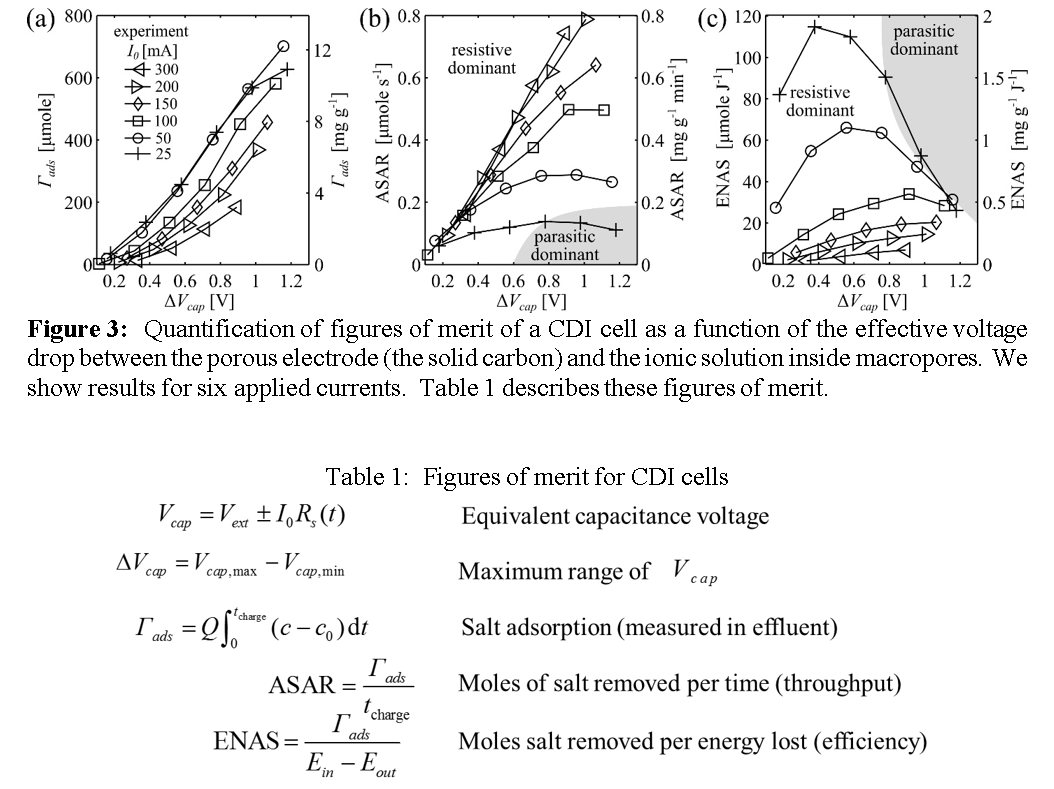Figures of merit and control methods for capacitive deionization (CDI)
Ali Hemmatifar and Juan G. Santiago
Collaborator: Michael Stadermann of LLNL
Clean water and renewable energy are two of the most important engineering challenges of this century, and the two problems are intimately coupled.
We are exploring a novel technique for water purification called capacitive deionization (CDI). CDI uses super-capacitor-like porous electrodes
to electrostatically trap salt ions while pumping/advecting out clean drinking water. For brackish water sources (e.g., roughly 80% of the US
desalination market), CDI is more energy efficient than competing technologies including reverse osmosis. CDI is also scalable, compatible with
solar power, and tailorable.
We have developed new methods to analyze and model the traditional flow-between CDI cells (where feed water is flowed in a space between electrode pairs).
Figure 1 below shows a schematic of such a cell and the microstructure of the porous electrodes. We treat the electrodes as bimodal structures where so-called micropores
(order 1 nanometer) are responsible for most of the capacitance and electrostatically adsorb salt ions and so-called macropores (order 1 micron) allow for intra-electrode
transport via electromigration and diffusion.

Figure 1: (a) Schematic of flow between CDI cell showing pressure-driven flow through a gap
between electrodes and porous electrode regions. (b) Schematic of electrode macropores and micropores.
We have developed the first-ever, high fidelity two-dimensional (2D) models for water desalination. We used porous-electrode theory and derived mean-field (volume averaged) ion transport equations. The movies show modeling results of a flow-between CDI cell from Hemmatifar et al., 2015.
We have also performed extensive characterizations of CDI cells using a technique where we use order 10 Hz current fluctuations imposed on a constant current
operation to discriminate between series resistances (gap between electrodes, current collector, contact resistance, etc.) and parallel resistances
(parallel to capacitors and within electrodes). Below we show example experimental quantification of CDI performance and list key figures of merit.

Reference
Hemmatifar, A.; Stadermann, M.; Santiago, J. G. Two-Dimensional Porous Electrode Model for Capacitive Deionization, The J. of Physical Chemistry C, 2015. (click here for pdf)
Hemmatifar, A., Palko, J.W., Stadermann, M., & Santiago, J.G., “Energy breakdown in capacitive deionization,” Water Research, 2016.(click here for pdf)
